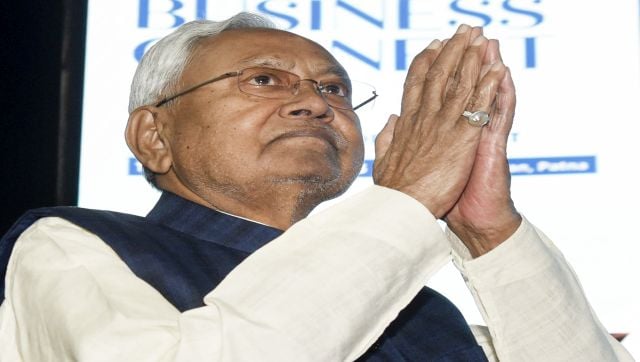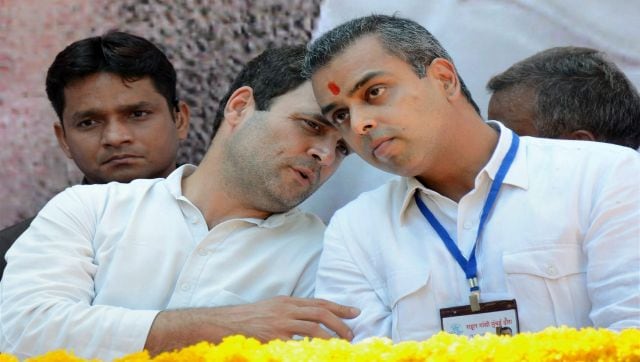The politics of Punjab is exceptional in many ways. And that is what makes the coming Assembly polls quite unpredictable.
For decades, the state has played an important role in India’s economic growth, especially in the field of agriculture. One of the key factors that has shaped politics in the state since the 1960s is the land ownership pattern. The ownership of land in Punjab is also a key factor in determining the socio-economic status of various communities and subsequently influencing the public discourse in the state.
The Scheduled Castes (SCs) constitute about one-third of the population of the state. But they own less than one per cent of the total landholdings in the state. This strange pattern of land holdings is a burden of the colonial legacy. The British administration deliberately created a class divide among Punjabis through legislation in 1901. It was called the Alienation of Land Act.
“Under the Act, only the feudal ‘agriculturalist’ castes/communities dubbed as ‘martial race’-the Sikhs (and the Muslims) were entitled for allotment of the land in the newly constructed canal colonies in north-west Punjab as the British deliberately made effort to recreate within them the rural structure of the rest of the Punjab with all its social and political control. Castes not designated as agriculturalists were barred from acquiring the agricultural land anywhere in Punjab. This deprived the socially marginal castes despite their being dependent over agriculture. Colonial policy was apparently aimed at winning the abiding loyalty of the politically quiescent but socially and economically dominant land owning peasant castes and communities that formed a significant part of the colonial forces.” (Electoral Politics in Punjab: Factors and Phases by Ashutosh Kumar, Routledge, 2020, Pp 21).
In fact, post-Independence, this divide between the landless or marginal farmers from backward castes and the upwardly mobile Jat Sikhs has widened. Currently, Jat Sikhs constitute around 20 percent of Punjab’s population and they control 60 per cent of the land ownership. Ironically, the ‘Green Revolution’, touted as the key source of Punjab’s prosperity, also perpetuated the class divide significantly as it benefited mostly large farmers. “The pattern of landholdings also underwent change in the form of consolidation of landed properties under the Pratap Singh Kairon-led Congress regime. It meant that small farmers, mostly from lower castes, either ceased to remain tenants or were compelled to sell their land to the big landlords.” (Politics in Punjab: Factors and Phases, Pp22)
Kumar points out, “The politics of Punjab deviates from the emergent trend. The social basis of power in Punjab has remained unchanged in favour of the land owning Jat Sikh community despite the sizeable presence of the scheduled castes and backward castes in the state. Punjab is yet to experience what has been dubbed as ‘assertion from below’ sweeping Indian states through the electoral route.”
This also brings us to the big question of whether the appointment of Charanjit Singh Channi as the first Scheduled Caste chief minister of the state is the beginning of this ‘assertion from below’. Will this help the Congress garner a major chunk of the SC votes? Is it the end of domination of Jat Sikhs in Punjab politics? Does Channi really represent the socially marginalised sections of society in Punjab?
***
Why Charanjit Singh Channi as Congress’ CM face is a double-edged sword in Punjab
***
The results of the Assembly polls on 10 March would point towards answers to these questions. But one thing is clear that Akalis, as well as Congress, have not been able to build collective leadership in the Scheduled Caste constituency during their years in power. These parties have hardly given tickets to Scheduled Castes from the non-reserved/general constituencies which is an essential step towards bridging the divide between Scheduled Castes and other communities in the state.
The two main parties of Punjab — SAD and Congress — have believed more in optics when it comes to the cause of SC empowerment. They should probably learn a lesson from the rise and fall of the Bahujan Samaj Party (BSP) in Punjab. The lesson is clear that unless you build a collective leadership of SCs within your party, appointing merely a Chief Minister could just turn out to be merely a gimmick and may not bring real empowerment. Such leadership can’t be built in a short span of time. It is a long road.
The rise and fall of the BSP is a mirror to all those political parties of Punjab that want to tap this huge SC constituency without building their leadership and giving them a real share in the power apparatus at all levels.
BSP, which is considered to be now an Uttar Pradesh-focused party, had in fact made a big bang beginning in Punjab. Kanshi Ram, the founder of BSP, was from the Doaba region of Punjab. He founded BSP in 1984. He shot to limelight by winning from Hoshiarpur in the 1991 parliamentary elections. Significantly, Hoshiarpur was not a reserved seat. The BSP made an impressive showing in 1992 Assembly polls. It contested 105 seats and won nine, garnering 16.32 per cent vote share. But Kanshi Ram failed to build a collective leadership in Punjab and over a period of time, his party lost its support in its core constituency of SCs.
In the 1997 Assembly elections, the BSP contested 67 seats but could manage to win only one. Its vote share came down to 7.48 per cent. Since then, the party’s fortune has been on a slide and it has failed to even open its account in four Assembly elections from 2002 to 2017. Its vote-share has also been reducing dramatically, making it an almost non-existent player in the state. In 2002, BSP’s vote-share was 5.69 per cent, in 2007 it came down to 4.13 per cent, it increased slightly to 4.29 per cent in 2012. But any hopes of revival of the BSP were dashed as its vote share hit almost the bottom of the pit at 1.5 per cent in the 2017 Assembly polls.
***
Click here to know more about Assembly Elections 2022
***
With the decimation of the BSP, it is clear that the SC votes are up for grabs. Which way these votes would go, one cannot say specifically. But the Shiromani Akali Dal (SAD) has taken an interesting gamble by aligning with the BSP for the 2022 polls after breaking alliance with the Bharatiya Janata Party(BJP). The results of the past elections show that the best bet for an opposition to unseat the Congress was the SAD-BJP alliance as it is the only alliance that has ruled in the state in two successive terms. However, this time the BJP is contesting these polls in alliance with Punjab Lok Congress and Shiromani Akali Dal (Sanyukt).
The SAD’s alliance with the BSP has an interesting analogy. Both the parties had an alliance for 1996 Lok Sabha polls also. The alliance was able to take a substantial lead in many Assembly segments with a substantial SC population but after their alliance broke in 1997, the SAD lost almost all these seats in Assembly polls. However, the BSP was considered to be an emerging party at that time and was still very popular, now it is a spent force in Punjab. Thus, one can’t be sure how effective the SAD-BSP alliance would be on seats with a sizeable SC population.
Interestingly, the Aam Aadmi Party(AAP), which is being keenly watched and touted by many as the front-runner in the Assembly polls, has also ignored the SC votes. Its choice of the chief ministerial candidate reflected the domination of Jat Sikhs in this party too. This could hurt the party badly as it seems to be vying for the same pie for which the SAD and the Congress are competing.
In a nutshell, as political parties are fighting pitched battle in the keenly contested Assembly polls in Punjab, one-third population of the state is still awaiting the emergence of credible and collective leadership from its community which could take it forward by empowering them in the real sense and not through gimmicks or freebies.
The writer, an author and columnist, has written several books. Views expressed are personal.
Read all the Latest News, Trending News, Cricket News, Bollywood News,
India News and Entertainment News here. Follow us on Facebook, Twitter and Instagram.
February 16, 2022 at 03:05PM











No comments:
Post a Comment